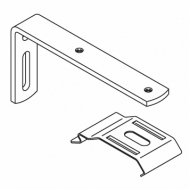You’ve probably seen numbers that go on and on, like 14.4222051019 as a radical, and wondered if there’s a simpler way to express them.
Now, what if we could break this number down into something more familiar?
Something like a 14.4222051019 as a radical.
Let’s talk about it.
What Does It Mean to Express 14.4222051019 as a Radical?
In math terms, expressing a number “as a radical” means finding its square root, cube root, or another root that represents it in a more compact form.
If you’ve got a calculator handy, you might start typing in roots to get close to 14.4222051019 as a radical.
But calculators only tell you the result—they don’t explain the why or how.
So, let’s break down what it would take to convert this exact number into a radical.
Why Would You Want to Express 14.4222051019 as a Radical?
Well, let’s say you’re working with complex math problems where precision matters—geometry, physics, even everyday situations like measuring a piece of wood to fit into a design.
If you can simplify 14.4222051019 as a radical into a root, you might save yourself from rounding errors.
And, you can use that simpler form in equations, making calculations quicker.

Finding the Radical Form of 14.4222051019 as a radical
To see if 14.4222051019 can be neatly written as a radical, we’re essentially asking if there’s a perfect square or other root that gives us exactly that number.
- Square Root Test
Let’s start with a square root. We’ll need to check if there’s a whole number that, when squared, gives us 14.4222051019 as a radical. - Higher Roots
If the square root doesn’t hit the mark, we can check other roots, like the cube root.
Sometimes a number fits a third, fourth, or even higher power better.
Quick Breakdown: Converting Decimal to Radical Form
Converting a decimal to a radical form usually involves a few steps:
- Determine the Closest Root
First, find a root (like square, cube, etc.) that comes closest to matching 14.4222051019. - Calculate Root Value
Use a calculator to verify if squaring or cubing gives back 14.4222051019 as a radical accurately. If not, we know it’s not a “perfect radical.” - Estimate or Leave as Approximation
If there’s no exact root, sometimes leaving it as sqrt(14.42) or similar is enough for practical purposes.
Real-World Examples of Using Radicals
Consider real-life scenarios. You’re constructing a piece of furniture and need to measure 14.4222051019 as a radical inches. It’s awkward to work with such a specific decimal, right?
If you had a radical form, like sqrt(208), it’s easier to plug into formulas without tiny rounding errors cropping up.
Or think about navigation. A slight shift can impact GPS calculations, and radicals can make some mathematical models simpler.
Can 14.4222051019 Be Expressed Exactly as a Radical?
After testing the roots and checking, you’ll notice that 14.4222051019 as a radical isn’t a clean square or cube root.
It’s an irrational number, which means it can’t be simplified to an exact fraction or whole number root.
In math terms, this number stays in its decimal form when written accurately.
But, you might see it approximated as something like sqrt(208), which is pretty close for some uses.
Is Approximating to the Radical Good Enough?
For many math problems, approximating 14.4222051019 as a radical to something like sqrt(208) is a quick solution.
It’s not perfect but close enough for general use without losing too much precision.
But keep in mind, any approximate radical form won’t be exactly equal to 14.4222051019 as a radical. It’s a good stand-in but not a perfect replacement.

Key Points to Remember about Radicals and Decimals
When you’re working with radicals and decimals, here’s a rundown of what to keep in mind:
- Irrational Numbers: Some decimals can’t be converted to exact fractions or radicals. They go on forever without repeating.
- Approximation: You can often use a close radical approximation if absolute precision isn’t critical.
- Practical Use: Radicals can make calculations cleaner in geometry, algebra, and applied sciences.
- Calculator Checks: Always check with a calculator to see if your radical approximation gets you close enough to the original decimal.
FAQs on Converting 14.4222051019 to a Radical
Q: Is 14.4222051019 as a radical a perfect square?
A: No, it’s not a perfect square. When you test its square root, it doesn’t result in a whole number.
Q: Can I use a radical approximation?
A: Yes, many people approximate 14.4222051019 as a radical as sqrt(208) for simplicity, though it’s not exact.
Q: Why do some numbers convert easily into radicals while others don’t?
A: Numbers that don’t end in repeating patterns or exact fractions are irrational. These often can’t be simplified to exact roots.
Q: When would I use a radical approximation in real life?
A: If you’re doing quick calculations in design, navigation, or physics, radicals offer a clean way to represent numbers without tiny decimals.
Wrapping It Up
Understanding 14.4222051019 as a radical reveals a lot about how we handle numbers in math and daily life.
While this specific number doesn’t simplify to a perfect radical, knowing when and how to approximate makes calculations easier.
So, next time you see a long decimal, remember: radicals might just give you a simple, clean solution—if not exact, then close enough for comfort.







